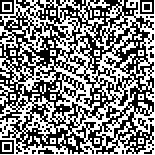| 引用本文: |
-
黄庶识,卢明倩,黄桂媛,廖威,陈丽梅.UV胁迫酵母细胞凋亡过程的拉曼光谱研究[J].广西科学,2015,22(2):113-120. [点击复制]
- HUANG Shu-shi,LU Ming-qian,HUANG Gui-yuan,LIAO Wei,CHEN Li-mei.Raman Spectroscopy for the Non-destructive Monitoring of Apoptosis Process by UV Stress within a Single Yeast Cell[J].Guangxi Sciences,2015,22(2):113-120. [点击复制]
|
|
| |
|
|
| 本文已被:浏览 557次 下载 493次 |

码上扫一扫! |
| UV胁迫酵母细胞凋亡过程的拉曼光谱研究 |
|
黄庶识1,2, 卢明倩1, 黄桂媛1, 廖威3, 陈丽梅2
|
|
|
| (1.广西科学院生物物理实验室, 广西南宁 530007;2.昆明理工大学生物工程技术研究中心, 云南昆明 650500;3.广西职业技术学院, 广西南宁 530226) |
|
| 摘要: |
| [目的]了解UV诱导酵母细胞发生凋亡过程中生物大分子的变化及细胞凋亡的分子机制。[方法]应用单细胞激光光镊拉曼光谱技术(LTRS),实时研究酵母细胞凋亡过程中拉曼光谱强度的动态变化,分析单个细胞凋亡过程的生理生化变化。[结果]致死剂量UV照射酵母细胞后,细胞发生凋亡。对于群体细胞,归属于核酸的1085 cm-1,1300 cm-1,蛋白质的850 cm-1,1440 cm-1,1604 cm-1,1650 cm-1和脂类的1085 cm-1,1300 cm-1,1440 cm-1拉曼峰强度都随凋亡时间的延长而降低,反映酵母细胞在凋亡过程中,细胞内核酸、蛋白质、脂质等大分子物质的含量随时间变化逐步减少;1604 cm-1下降幅度最大,到凋亡后期下降60%,反映细胞凋亡过程中能量代谢受阻,呼吸产能活力下降,推测与麦角固醇结构与功能改变有关。单个细胞凋亡过程动态的光谱变化显示,归属于蛋白质等生物大分子的光谱强度也呈下降趋势,但是在90~120 min和125~167 min时间段里,850 cm-1,1085 cm-1,1300 cm-1,1440 cm-1和1665 cm-1拉曼峰强度出现恢复性的上升和下降过程,说明群体细胞平均后的光谱数据信息,掩盖了个体细胞凋亡过程中一些信息的变化,群体细胞的结果不能完全反映个体细胞真实的生理状态。[结论]LTRS基于单个细胞水平上的研究,能更直接、真实地反映UV胁迫下细胞内生物大分子变化的动态信息。 |
| 关键词: 拉曼光谱 酵母 UV照射 凋亡 单细胞分析 |
| DOI:10.13656/j.cnki.gxkx.20150401.001 |
| 投稿时间:2014-11-14修订日期:2015-03-05 |
| 基金项目:广西自然科学基金重点项目(2014GXNSFDA118012)和国家自然科学基金项目(No.31160018)资助。 |
|
| Raman Spectroscopy for the Non-destructive Monitoring of Apoptosis Process by UV Stress within a Single Yeast Cell |
|
HUANG Shu-shi1,2, LU Ming-qian1, HUANG Gui-yuan1, LIAO Wei3, CHEN Li-mei2
|
| (1.Lab of Biophysics, Guangxi Academy of Sciences, Nanning, Guangxi, 530007, China;2.Biotechnology Research Center, Kunming University of Science and Technology, Kunming, Yunnan, 650500, China;3.Guangxi Vocational and Technical College, Nanning, Guangxi, 530226, China) |
| Abstract: |
| [Objective] The apoptosis of yeast cells was induced by ultraviolet and its process was studied in order to understand the changes of biological macromolecules and the molecular mechanism.[Methods] Laser tweezers Raman spectroscopy (LTRS) was used to monitor the dynamics of the intracellular biological macromolecules in real-time during the apoptosis process of yeast cells stressed with UV at both cellular population level and single-cell level, respectively.[Results] Lethal doses of UV irradiation could cause cell apoptosis.The intensities of Raman peaks, which were assigned to nucleic acids(1085 cm-1, 1300 cm-1), proteins (850 cm-1, 1440 cm-1, 1604 cm-1, 1655 cm-1)and lipids(1085 cm-1, 1300 cm-1, 1440 cm-1), decreased significantly as a function of the duration of cell apoptosis at cellular population level, suggesting that the content of nucleic acids, proteins and lipids reduced gradually during the time that the yeast cells were undergoing apoptosis induced by UV.The peak of 1604 cm-1, which was called the Raman spectroscopic signature of life in yeasts, was a marker of Raman band for cell metabolic activity.Its intensity had the sharpest decline by 60% at the late stage of apoptosis, implying that the energy metabolism and breathing capacity were decreased during the process of cell apoptosis, which related to the changes of ergosterol structure and function theoretically.However, the changes of the intensities of Raman peaks at 850 cm-1, 1085 cm-1, 1300 cm-1, 1440 cm-1 and 1665 cm-1 between the group cells and the single cells were different significantly in the period of 90~120 min and 125~167 min, demonstrating that the heterogeneities of the single cells were masked by the average spectroscopy of the population cells.[Conclusion] LTRS can be used to directly and truthfully detect the kinetics of apoptotic process of yeast cells under UV irradiation at the single cell level and probe cellular heterogeneity. |
| Key words: Raman spectrum yeast ultraviolet irradiation apoptosis single cell analysis |
|
|
|
|
|